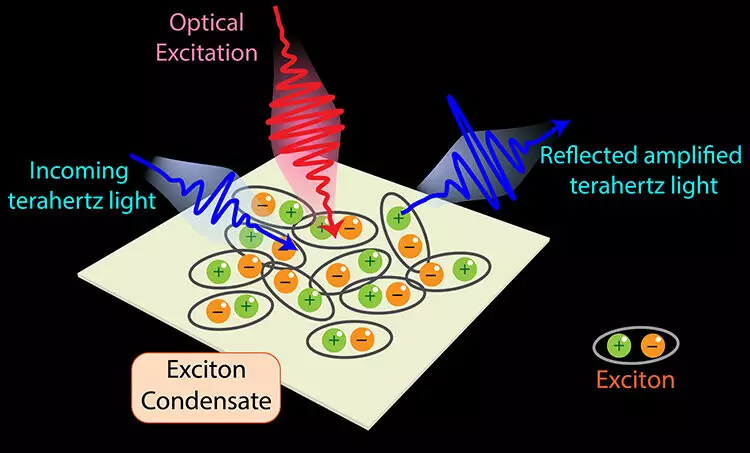The exploration of materials and their properties has always been a crucial aspect of scientific research. Scientists often rely on external stimuli such as temperature or pressure to perturb materials and observe their responses. However, there is one universal factor that surpasses all others in terms of speed – light. Just as a flashlight guides us in the dark, light can shine a new perspective on materials, uncovering their hidden properties. Recently, researchers at the University of California San Diego have made significant strides in this field by utilizing an advanced optical technique to study a fascinating quantum material known as Ta2NiSe5 (TNS). This groundbreaking work, published in Nature Materials, sheds light on the potential of optical stimuli in revealing previously elusive material properties.
Lead author Sheikh Rubaiat Ul Haque, a postdoctoral scholar at Stanford University, and his colleague, graduate student Yuan Zhang from Professor Richard Averitt’s lab, built upon the technique of terahertz time-domain spectroscopy. This technique enables scientists to assess a material’s properties over a wide range of frequencies. Haque’s enhancements to this method expanded the range of frequencies accessible for analysis, providing researchers with a more comprehensive understanding of the material’s behavior. The foundation of their work rested upon a theory proposed by Professor Eugene Demler from ETH Zürich and his graduate student Marios Michael. The theory postulated that certain quantum materials, when excited by light, might transform into a medium capable of amplifying terahertz frequency light. Intrigued by this idea, Haque and his team focused their investigation on the optical properties of TNS.
In the realm of quantum materials, the interaction of electrons and photons plays a fundamental role. When a photon excites an electron, it leaves behind a void known as a hole. If this electron-hole pair remains bound, it forms what is known as an exciton. Excitons, in certain cases, can even gather to create a condensate – a unique state where the individual particles behave collectively as a single entity. Haque’s technique, complemented by Demler’s theory, and aided by density functional calculations conducted by Angel Rubio’s group at the Max Planck Institute for the Structure and Dynamics of Matter, enabled the team to observe an intriguing phenomenon called anomalous terahertz light amplification. This revelation unveiled some of the hidden properties of the TNS exciton condensate.
The ability to imprint the quantum properties of condensates onto light could have far-reaching implications, particularly in the field of entangled light sources. Entangled light sources refer to multiple light sources with interconnected properties, utilizing quantum materials. Haque emphasizes the tremendous potential in this emerging field, suggesting that Demler’s theory can be applied to a wide range of materials possessing nonlinear optical properties. The study’s findings open the door to a new avenue of research, one that explores the quantum aspects of materials and their interaction with light.
The study conducted by the University of California San Diego researchers exemplifies the power of light in uncovering the hidden properties of materials. Through the use of an advanced optical technique and the integration of various theoretical frameworks and computational calculations, the team successfully explored the quantum material TNS, shedding light on its exciton condensate. The implications of this research reach beyond the world of quantum materials, as it paves the way for further investigations into entangled light sources. The ability to control and manipulate the quantum properties of materials through light has the potential to revolutionize various fields, from information technology to quantum computing. As scientists continue to delve into the mysteries of the quantum world, the role of light as a powerful tool for exploration will undoubtedly remain at the forefront of scientific discovery.


Leave a Reply